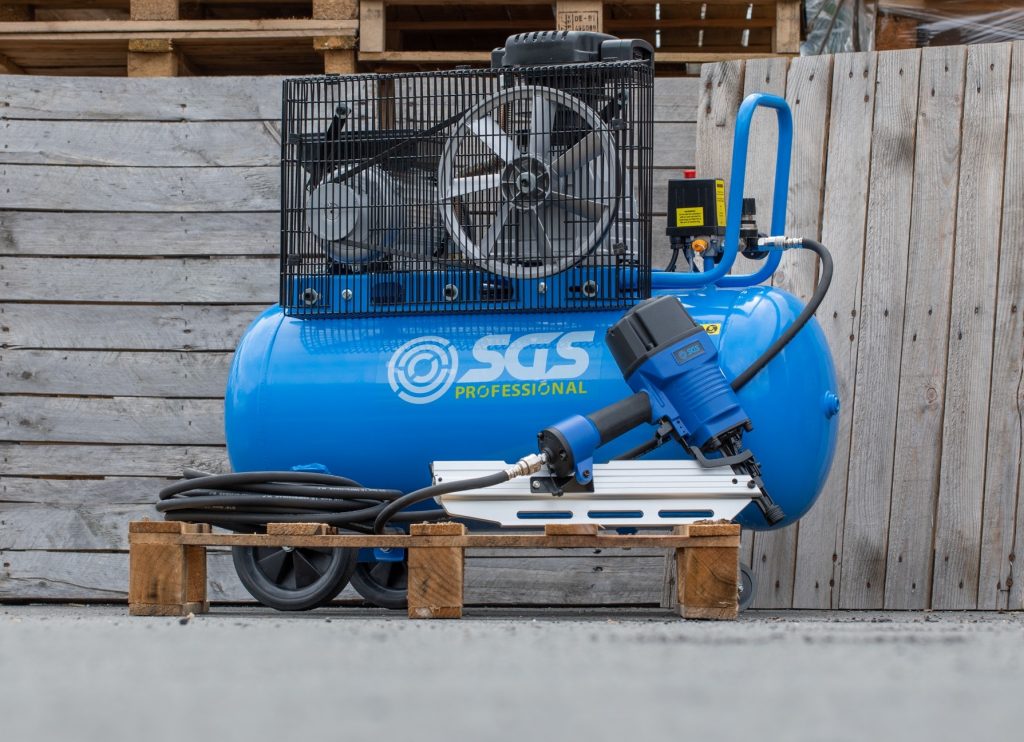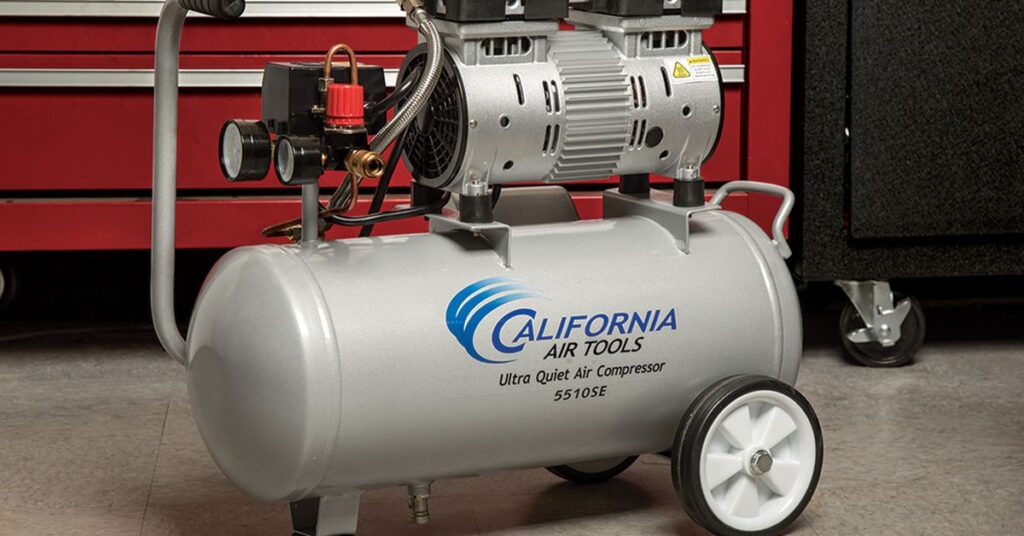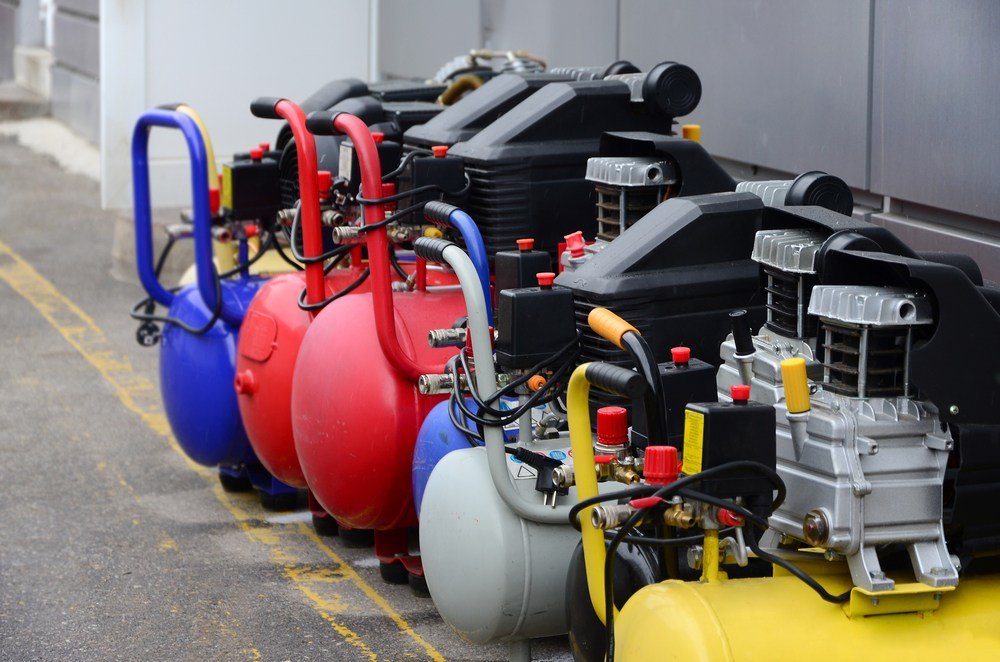Whether you work on vehicles for your living or are a keen DIY mechanic, you need the right tools to get the job done. Air tools and their associated air compressors Trusted Source Air compressor - Wikipedia An air compressor is a pneumatic device that converts power (using an electric motor, diesel or gasoline engine, etc.) into potential energy stored in pressurized air (i.e., compressed air). By one of several methods, an air compressor forces more and more air into a storage tank, increasing the pressure. en.wikipedia.org offer more power, reduced heat output, less weight, and even a longer lifespan compared to electric tools. There is also little or no risk of electric shock or fire hazard.
However, all of these potential benefits can easily be negated if you don’t have the right size of air compressor. This may leave you wondering what size of air compressor do I need? There are several factors that go into calculating the optimum size of the compressor. So, here we’ll delve into the topic to help you to make an informed purchase decision.
With so many air compressors on the market and the myriad of uses for them, it is important to choose the right one for the job. Here are just some of the important considerations to choose the best air compressor.
The tanks on air compressors can have a capacity of anywhere from 1 gallon to 60+ gallons. The size of the tank will determine how long you can use the compressor before the compressor motor needs to switch back on to generate more compressed air.
Since there are certain tools that require a continuous flow of air, you will need a larger tank. However, if you are using tools that operate in a short burst, a smaller tank would suffice. Just bear in mind that the fewer times the motor cycles on and off, the better it will be for the lifespan.
For example, if you were using your air compressor to set up an inflatable swimming pool, using a one-gallon tank compressor, the motor would need to run constantly. Combined with the lower airflow on a small compressor, you are likely to find that it takes several hours to inflate your pool. However, swap this out for a 30-gallon industrial compressor, you’re likely to be set up in just a few minutes.
As we touched on above, another important factor when choosing an air compressor is the air flow rate. This is usually measured as CFM or SCFM, which refers to the standard cubic feet per minute.
You will need to ensure that the CFM number meets the minimum ratings of the air tools that you want to use. All air tool manufacturers set a CFM requirement. So, if you already have some air tools or have an idea of what you’re shopping for, you will need an air compressor that has the capacity to take the highest CFM ratings of your tools multiplied by 1.5.
This will provide a buffer, as the CFM may vary during operation and according to your PSI setting. You will also need to think about whether you need to connect multiple air hoses to operate more than one tool simultaneously.
You will also need to consider the power of the air compressor. While the CFM determines how much power the compressor provides to your air tools, the horsepower is how powerful the motor is, so you can refill the tank efficiently.
Typically air compressors have horsepower ratings of 1.5 to 6.5. However, it is possible to purchase a large stationary compressor with up to 15 HP. Bear in mind that if you plan on using a standard electric power outlet, your compressor should be 2 HP or less, as standard AC cords require a lower voltage.
You also need to think about the noise and weight of your new compressor. If you’re planning on using your air compressor in a garage attached to your home, you may find the noise it generates annoying. So, it is a good idea to choose a compressor that generates less than 85 dBA.
Weight can also be an important factor. While lightweight models are easier to transport, they can often have a less powerful motor and small body that is prone to stability issues. However, heavier models can be difficult to move, so they need to be considered a dedicated garage unit.
If you’re thinking about what size air compressor do i need for impact wrench or other impact tools, you need to look at the specifics of the tools you will use.
For example, while a blow gun only requires 2 or 3 CFM@ 90PSI, an impact wrench can need up to 12 CFM.
As we discussed above, a good rule of thumb is to look at your maximum requirement and multiple the CFM by 1.5.
Painting a car requires sufficient air volume to complete the job smoothly. If you only have a small compressor, your paint gun will struggle, and you’re likely to run out of air. While it is possible to anticipate the pressure drops and adjust accordingly, this can create condensation problems. For this reason, it is a good idea to opt for a larger 60-gallon compressor.
A flat tire can be not only frustrating, but also potentially dangerous. So, a portable air compressor can be a great addition to your tool kit.
These are typically lightweight and compact, yet have the air pressure to inflate your flat tire. Most portable compressors offer a maximum air pressure of 100 PSI, which is sufficient for car or truck tires.
Sandblasting uses pressurized air to force sand at surfaces to strip off rust, old paint, or grease. There are two factors you need to consider when determining what size of air compressor do I need for sandblasting.
The first is the CFM. If you will only be completing small sandblasting jobs, 10 to 20 CFM will be sufficient. However, if you will be tackling larger jobs, you will need up to 100 CFM. The second factor is the PSI. Higher PSIs offer faster cleaning, but they are more expensive to run. For optimum efficiency, a minimum of 100 PSI is ideal.
Air compressors can be very handy tools, but you need to choose a model that meets your specific requirements. So, if you’re wondering what size air compressor do I need, you need to think carefully about how you will use the compressor.
If you’re planning on using impact tools in your garage, a larger compressor may not be portable, but will offer the CFM you need. However, if you simply want an emergency back up in case of flat tires, a lower powered portable compressor will have more than enough capacity to meet your needs.





